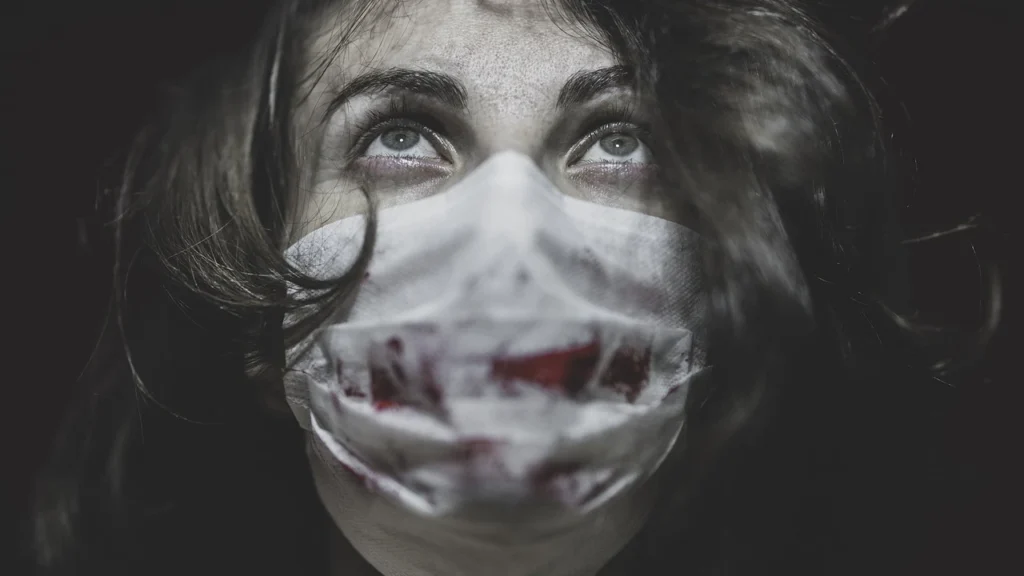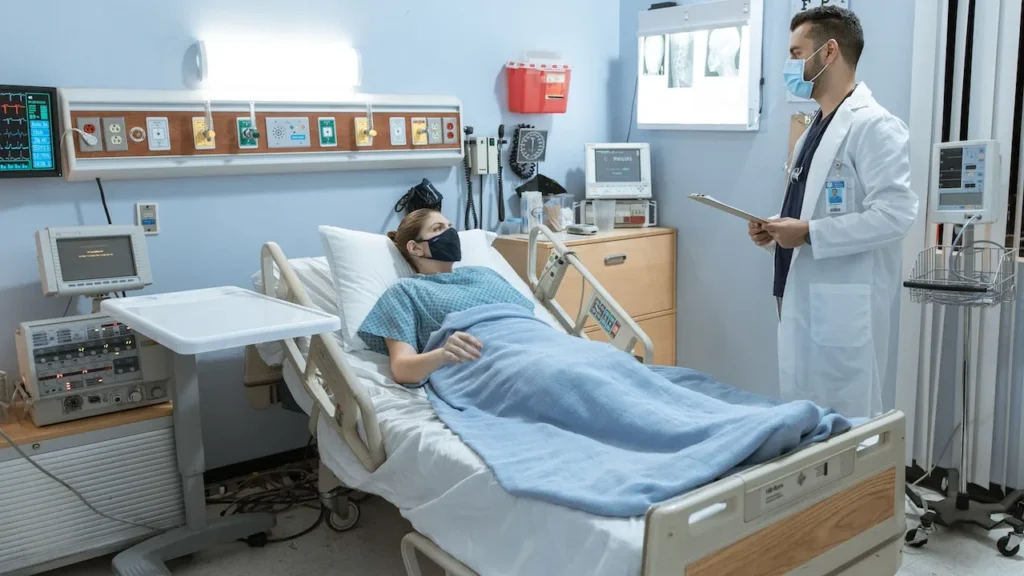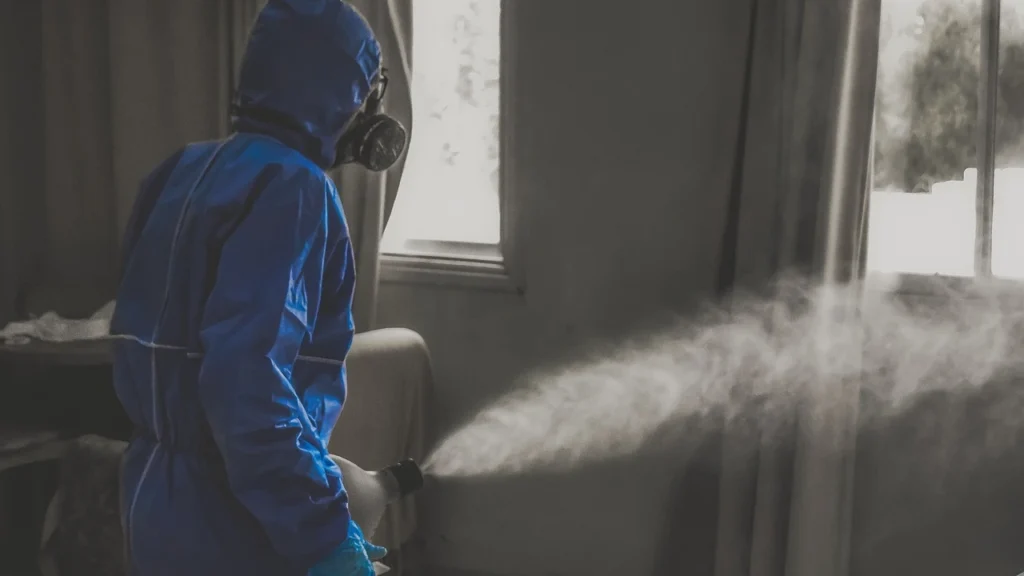In order to prevent monkeypox transmission in hospital standard precautions must be in place however, If a patient is seeking treatment in any healthcare setting and suspects for monkeypox symptoms then along with standard precautions additional measures should be taken about how to prevent monkeypox transmission in hospital settings

How to prevent monkeypox transmission if a patient is suspected for monkeypox symptoms in Healthcare settings?
There are two types of patient isolation strategies on is in healthcare setting or hospital while other is isolation of patient by himself in domestic setting. However,If monkeypox case is suspected in a healthcare setting, following are the steps which must be taken immediately.
1. Case Reporting:
If a patient is suspected for monkeypox symptoms, first of all control team in hospital should be notified immediately to ensure additional measures because they know how to prevent monkeypox transmission.
2. Avoid Cleaning:
All cleaning activities that can cause resuspension of dried skin lesion material including use of portable fans, dry dusting, sweeping and vacuuming should be avoided to prevent further transmission of mpox virus.
3. Isolation or Placement of Suspected Patient:
Monkeypox suspected patient should preferably be placed in an isolated room with attached bathroom and the door should be kept closed.
4. Restrict Movement of Suspected Patient:
There should be restricted transport and movement of the suspected patient outside of the room should be limited. If necessary then following measures should be taken strictly. If it is necessary for mpox suspected patient to move outside the isolation room then they must follow few precaution, they should
- Use well-fitting medical mask and
- Cover lesions any exposed skin with gown or sheet
- All procedures which may produce oral secretions like Intubation, extubation should be performed in an airborne infection isolation room.
5. Precautions for Healthcare personnel (PPE’s):
Healthcare personnel who enter in the patient’s room must ensure wearing PPE’s including gloves, gown, eye protection (goggles or a face shield covering the front and sides of the face), and respirator equipped with N95 filters or higher.
6.Take Decision about Duration of Suspected Patient Isolation:
Decisions regarding discontinuation of isolation precautions in a healthcare facility may need to be made in consultation with the local health department.
- Suspected Monkeypox Patient Duration: Monkeypox suspected patient should be kept in isolation and follow recommended isolation precautions until infection is ruled out
- Confirmed Monkeypox Patient Duration: If monkeypox is confirmed in a patient then the patient must be kept in isolation until all lesions have crusted, those crusts have separated, and healthy skin layer has formed underneath.
How to Prevent Monkeypox Transmission: Precautions adopted by Monkeypox Patient in Isolation of Hospitals?
1. Hand Washing/ Sanitization Protocol:
Hand sanitizer (alcohol-based) or hand washing with soap and water should be performed by suspected monkeypox and other people after
- Direct contact with patient or
- Touching rash material,
- Touching clothing, linens, or
- Contact with environmental surfaces that may have had contact skin lesion
2. Precautions for Skin lesions:
All skin rashes must be covered to the extent possible by wearing long sleeves or full length clothes. Especially gloves must be worn to cover lesions on hands while seeking medical care.
3. Precaution for Aerosol Transmission:
During medical care, monkeypox suspected or confirmed patient must wear well-fitting medical mask. Healthcare personnel should wear a respirator or a well-fitting mask during contact with the patient.
4. Precaution for Bandage or Dressing:
If possible, patient should change their own bandages and handle contaminated linens wearing disposable gloves and then immediately wash their hands after removing gloves.
5. Management of Medical waste:
Contain and dispose of contaminated waste, such as dressings, bandages, or disposable glove in biomedical waste as per guidelines and recommendation of hospital waste disposal which outlines how to prevent monkeypox transmission.

How to Prevent Monkeypox Transmission Through Environmental Infection Control in Healthcare Settings?
How to prevent monkeypox transmission in healthcare setting includes an important component including
- Decontamination of isolation room
- Laundry of isolation room
- Waste disposal of Isolation room where patient with monkeypox has spent significant time
How to Prevent Monkeypox Transmission by Decontamination of Monkeypox Patient Isolation Room?
Biosafety of Healthcare staff /Wear appropriate PPE’s:
Healthcare staff involve in decontamination must wear gloves, gown, eye protection i.e. goggles and Respirator equipped with N95 filters or higher to avoid direct contact with contaminated material in healthcare setting.
Protocol for Disinfection of monkeypox patient isolation room:
- Avoid dry cleaning or dusting which may disperse dried particles like vacuum or dusting etc.
- Remove all laundry safely before cleaning and decontamination.
- Rooms should be cleaned with hospital detergents
- Disinfect the room as per standard terminal cleaning of an isolation room preferably with 1000ppm available chlorine (sodium hypochlorite.
- Frequently touched surfaces such as tables, door handles, toilet flush handles and taps must be disinfected to make sure thorough disinfection.
Protocol for Decontamination and Cleaning of soft furnishing:
Mattresses can be cleaned by wiping with detergent solution, removing excessive fluid and wiping with 1000ppm available chlorine and allowed to air dry afterwards. In case of soiled or damaged cover it should be replaced, double sealed and sent for incineration. Carpets and soft furnishings should be steam cleaned.
How to Prevent Monkeypox Transmission by Decontamination of Monkeypox Isolation Room Laundry?
What does it mean by laundry of Monkeypox Patient Isolation Room?
Clothing that have been in direct contact with the skin of patient e.g. duvets, pillows, blankets, sheets, towels or underwear can be sealed, bagged and destroyed as Category A waste.
- Collect contaminated clothing before cleaning the room without shaking them so that it may not disperse infectious particles.
- Place all contaminated clothing or linen in a water soluble (alginate) bag and seal the bag tightly then place inside an impermeable bag for transport to the laundry facility.
- In washing facility contaminated laundry must be washed in a standard washing machine with hot water (over 60° C) and detergent however bleach may also be added but is not necessary.
- The handler must wear appropriate PPE’s.
- Washed clothing should not be placed into areas where they may be re-contaminated during the cleaning process.

How to Prevent Monkeypox Transmission by Monkeypox Isolation Room Waste Management?
- Waste produced by monkeypox suspected or confirmed patient should be treated as healthcare or clinical waste category B.
- Clinical waste should be disposed in orange biohazard bag for alternate treatment and should not be sent for incineration.
- All diagnostic samples received from suspected or confirmed monkeypox patient should be transported as Category B samples
- However, laboratory cultures are assigned to Category A and must be treated as Category A waste.
For Further details Guideline for Isolation Precautions: Preventing Transmission of Infectious Agents in Healthcare Settings (2007) can be studied